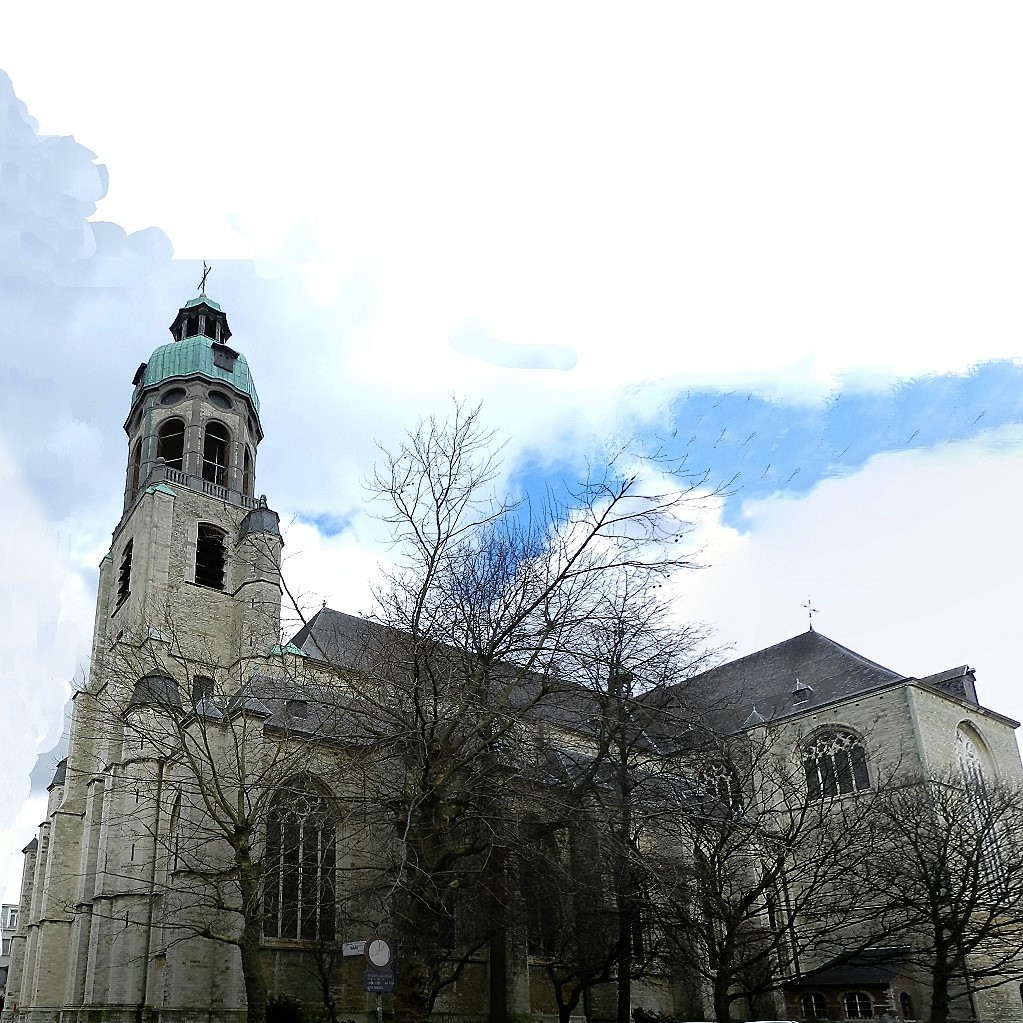Antwerp's St Andrew's Church, a revelation.
The confessionals and enclosed porches
In order to support the private character of the conversation of confessionThe sacrament of reconciliation. The believer [or penitent] confesses his / her shortcomings to a priest [the confessor] and expresses his / her regret. On behalf of God the priest grants forgiveness [absolution] and imposes a form of penance. This may include several prayers, an order to reconcile with the other party or, in the past, sometimes a pilgrimage. the CouncilA large meeting of ecclesiastical office holders, mainly bishops, presided by the pope, to make decisions concerning faith, church customs, etc. A council is usually named after the place where it was held. Examples: the Council of Trent [1645-1653] and the Second Vatican Council [1962-1965], which is also the last council for the time being. of Trent (1545-1563) created a new piece of furniture: the confessionalA piece of furniture that was especially designed to facilitate the sacrament of confession, especially by avoiding that confessor and penitent come face to face. To the left and right are kneeling pews for penitents; in the middle is a small booth where the confessor sits. Both are separated from each other by a partition with a grid, so that the confessor can hear the penitent, but cannot see him / her.. The parishioners can confess to a priestIn the Roman Catholic Church, the priest is an unmarried man ordained as a priest by the bishop, which gives him the right to administer the six other sacraments: baptism, confirmation, confession, Eucharist, marriage, and the anointing of the sick. of their choice: the vicarAccording to Canon Law, a vicar is a substitute of a minister. In a diocese, several vicars assist a bishop: priests who look after a certain policy area within the diocese (parishes, liturgy, etc.)., assistant priest, chaplain or a visiting priest.
In 1628 there were two confessionals in each aisleLengthwise the nave [in exceptional cases also the transept] of the church is divided into aisles. An aisle is the space between two series of pillars or between a series of pillars and the outer wall. Each aisle is divided into bays.; they were the work of Filip Van Muysvelt. Later they were replaced by specimens of the open type, in Classicist late Baroque style: work of carpenter Frans Van Overdeput, with sculptures by Willem Roefs and Michael Ignatius D’Heur in the southern aisle (1773-1776) and by Willem Roefs only in the northern aisle. In the front, by the confessor’s cubicle, the confessionals have four square pillars, while the side compartments are flanked by flat, hollow (!) pillars, all of which are of the composite order, in which the Corinthian and Ionic order are mixed. After the Baroque custom these pieces of furniture have been incorporated into a continual panelling. The third confessionals, which the Van Mierlo brothers added in each aisle around 1895, are identical in construction, style and decorative details to the older ones.
Near the side altars in each aisle seats have been made in the panelling for the governors of the brotherhoods concerned.
End 18th century the two entrances to the transepts were given monumental Classicist Baroque enclosed porches. They are each other’s counterpart. They are decorated with medallions with a bust of an apostleThis is the name given to the principal twelve disciples of Jesus, who were sent by Him to preach the gospel. By extension, the term is also used for other preachers, such as the Apostle Paul and Father Damien (“The Apostle of the Lepers”).. In the south patron saintThis is a title that the Church bestows on a deceased person who has lived a particularly righteous and faithful life. In the Roman Catholic and Orthodox Church, saints may be venerated (not worshipped). Several saints are also martyrs. Andrew is given the place of honour and below it he is flanked by Peter and Paul. In the north Saint James the Great is accompanied by John and Simon.

